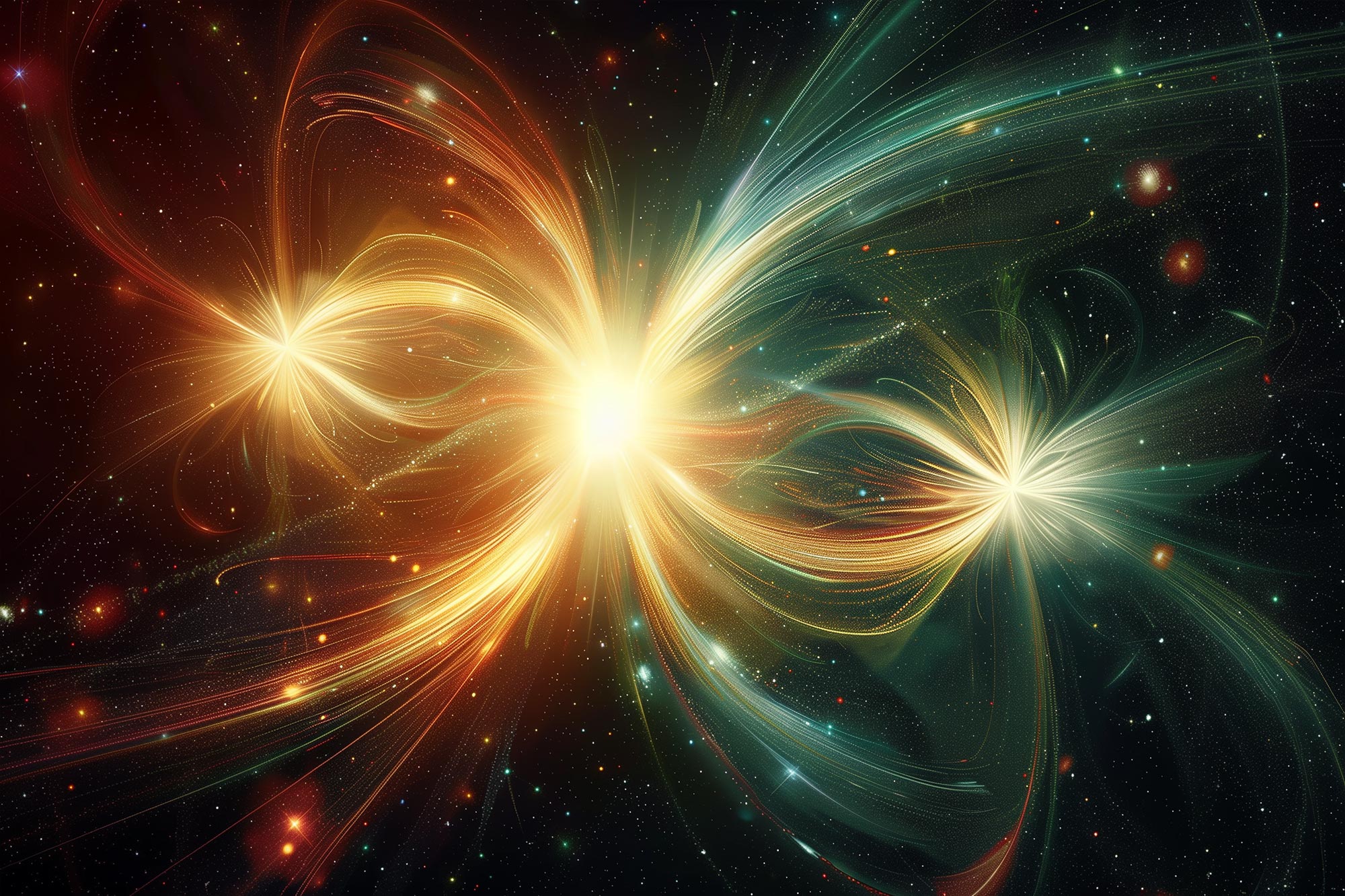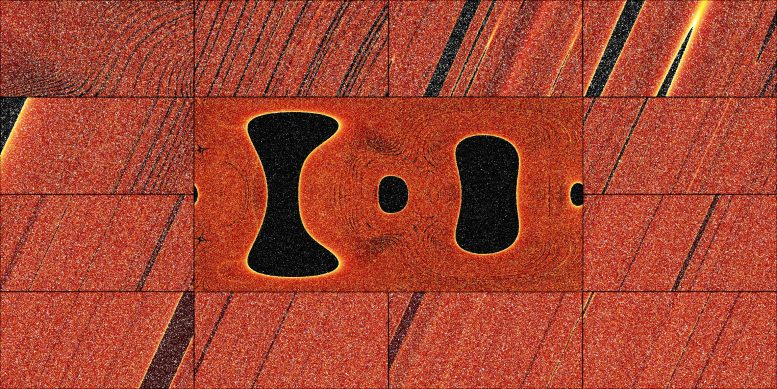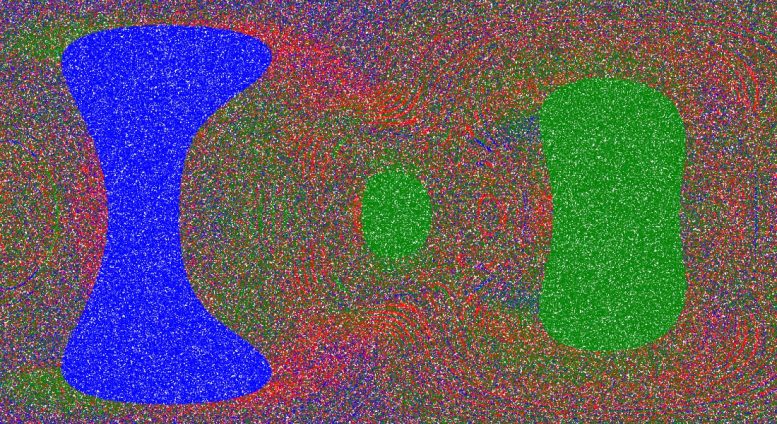

A new study has challenged the conventional understanding of the three-body problem, revealing that gravitational interactions among three massive objects can produce surprising regularities.
When three massive objects meet in space, they influence each other through gravity in ways that typically evolve unpredictably. In a word: chaos. That’s the conventional wisdom. However, a researcher from the University of Copenhagen has uncovered that these encounters often eschew chaos and instead exhibit regular patterns, frequently resulting in one of the objects quickly being expelled from the system. This breakthrough could be crucial for our understanding of gravitational waves and numerous other cosmic phenomena.
Exploring Cosmic Chaos and Mathematical Mysteries
Currently, the most popular show on Netflix is the science fiction series “3-Body Problem.” Based on a Chinese novel series by Liu Cixin, this series showcases a diverse cast of characters, spans various time periods, and introduces extraterrestrial visitors. Its central theme revolves around a star system where three stars gravitate around one another.
Such a system, with three objects influencing each other’s gravity, has intrigued scientists ever since the “father of gravity,” Isaac Newton, first described it. While interactions between two objects meeting in space are predictable, the introduction of a third massive object makes the triadic encounter not just very complex, but chaotic.

“The Three-Body Problem is one of the most famous unsolvable problems in mathematics and theoretical physics. The theory states that when three objects meet, their interaction evolves chaotically, without regularity, and completely detached from the starting point. But our millions of simulations demonstrate that there are gaps in this chaos – ‘isles of regularity’ – which directly depend on how the three objects are positioned relative to each other when they meet, as well as their speed and angle of approach,” explains Alessandro Alberto Trani of the University of Copenhagen’s Niels Bohr Institute.
Breaking New Ground in Astrophysical Models
Trani hopes the discovery will pave the way for improved astrophysics models, as the Three-Body Problem is not just a theoretical challenge. The encounter of three objects in the universe is a common occurrence and its understanding is crucial.
“If we are to understand gravitational waves, which are emitted from black holes and other massive objects in motion, the interactions of black holes as they meet and merge are essential. Immense forces are at play, particularly when three of them meet. Therefore, our understanding of such encounters could be a key to comprehending phenomena such as gravitational waves, gravity itself, and many other fundamental mysteries of the universe,” says the researcher.
Fun Facts: A 4-Body Problem
During the pandemic, Alessandro Alberto Trani started a side project to investigate fractal universes within the Three-Body Problem. It was then that he came up with the idea of mapping the outcomes in search of regularities.
He knew the famous problem from his studies, but hadn’t delved into the works of fiction – the recent Netflix show or the novel behind it: “The Three-Body Problem” by Liu Cixin. Nevertheless, out of curiosity, he familiarized himself with the plot enough to conclude that it actually deals with a “4-Body Problem.”
“As I understand it, it involves a star system with three stars and one planet, which is regularly thrown into chaotic developments. Such a system is actually best defined as a Four-Body Problem. However you define it though, according to my simulations, the most likely outcome is that the planet would quickly be destroyed by one of the three stars. So it would soon become a Three-Body-Problem,” the researcher grins.
A Tsunami of Simulations
To investigate the phenomenon, Trani coded his own software program, Tsunami, which can calculate the movements of astronomical objects based on the knowledge we have about the laws of nature, such as Newton’s gravity and Einstein’s general relativity. Trani set it to run millions of simulations of three-body encounters within certain defined parameters.
The initial parameters for the simulations were the positions of two of the objects in their mutual orbit – i.e., their phase along a 360-degree axis. Then, the angle of approach of the third object – varying by 90 degrees.

Unveiling Patterns Amidst Cosmic Chaos
The millions of simulations were spread across the various possible combinations within this framework. As a whole, the results form a rough map of all conceivable outcomes like a vast tapestry woven from the threads of initial configurations. This is where the isles of regularity appear.
The colors represent the object that is eventually ejected from the system after the encounter. In most cases, this is the object with the lowest mass.
“If the three-body problem were purely chaotic, we would see only a chaotic mix of indistinguishable dots, with all three outcomes blending together without any discernible order. Instead, regular “isles” emerge from this chaotic sea, where the system behaves predictably, leading to uniform outcomes—and therefore, uniform colors,” Trani explains.
Challenges and Opportunities in Astrophysical Research
This discovery holds great promise for a deeper understanding of an otherwise impossible phenomenon. In the short term, however, it represents a challenge for researchers. Pure chaos is something they already know how to calculate using statistical methods, but when chaos is interrupted by regularities, the calculations become more complex.
“When some regions in this map of possible outcomes suddenly become regular, it throws off statistical probability calculations, leading to inaccurate predictions. Our challenge now is to learn how to blend statistical methods with the so-called numerical calculations, which offer high precision when the system behaves regularly,” says Alessandro Alberto Trani.
“In that sense, my results have set us back to square one, but at the same time, they offer hope for an entirely new level of understanding in the long run,” he says.
Reference: “Isles of regularity in a sea of chaos amid the gravitational three-body problem” by Alessandro Alberto Trani, Nathan W. C. Leigh, Tjarda C. N. Boekholt and Simon Portegies Zwart, 28 August 2024, Astronomy & Astrophysics.
DOI: 10.1051/0004-6361/202449862